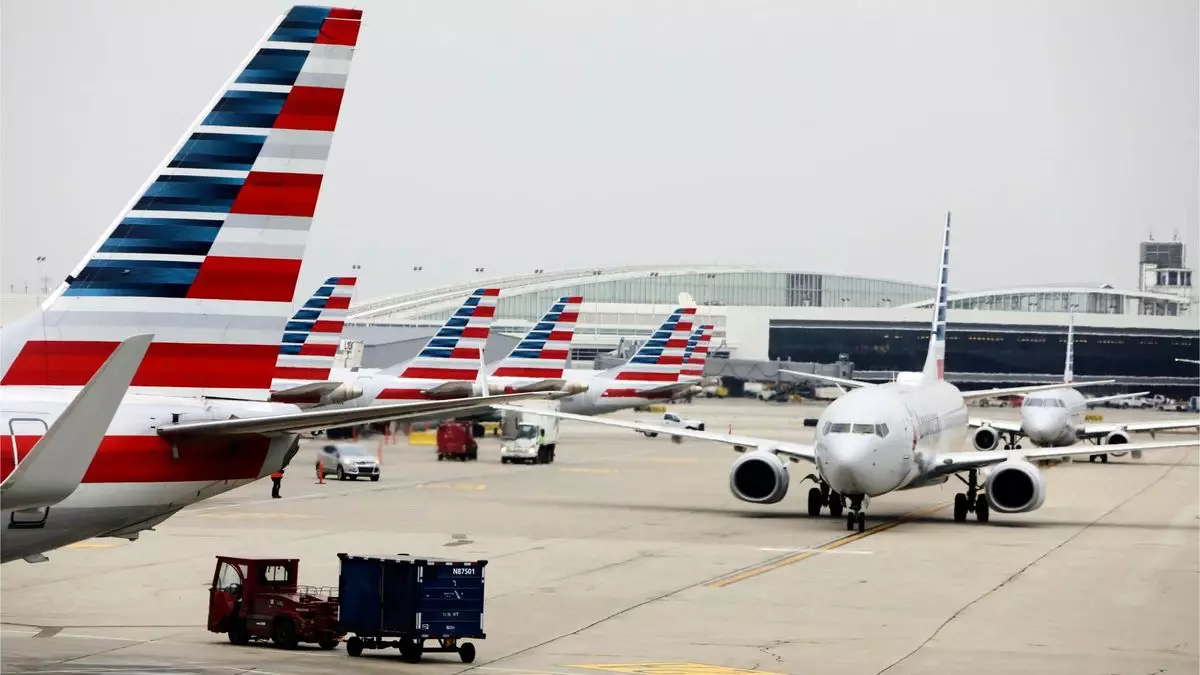In-flight connectivity has become an essential aspect of air travel. American Airlines, a major player in the aviation industry, is currently navigating the complexity of providing reliable WiFi to its passengers. As it stands, travelers on American’s mainline aircraft are granted a mere 20 minutes of ad-supported WiFi, while additional access comes with a price tag. In contrast, competitors like Delta and JetBlue have already established themselves as leaders by offering complimentary WiFi services. With Hawaiian Airlines and United Airlines also progressing towards free connectivity, the race is on.
Despite hints from Kim Cisek, American’s vice president of customer experience, about forthcoming announcements regarding free WiFi, the airline remains hesitant to fully commit. Cisek’s statements emphasize caution, suggesting a desire to “build this right” rather than rushing into a decision that may not align with their operational capabilities. This sentiment reflects the pressures airlines face as they balance innovative technologies with financial sustainability. American’s cautious approach might be interpreted as a learning curve from the past, where rapid adoption without thorough groundwork led some companies into unfortunate pitfalls.
The competitive nature of the airline industry underlines the urgency for American Airlines to expedite its WiFi enhancements. Delta’s SkyMiles program, which offers free WiFi to its members across most of its domestic fleet, positions it favorably among travelers seeking connectivity. Similarly, United’s recent announcement regarding its plans to integrate SpaceX’s Starlink satellite service across over 1,000 aircraft further amplifies American’s perceived shortcomings. With such advancements made by other carriers, there is a compelling pressure on American Airlines to enhance its WiFi services to retain and attract customers who prioritize connectivity.
Cisek mentioned that American Airlines has initiated the installation of high-speed satellite WiFi across a significant portion of its narrowbody fleet, with an aim to extend this service to regional and widebody aircraft over the next few years. This phased approach not only highlights the airline’s commitment to improving its services but also showcases a strategic framework to ensure reliable connectivity from gate to gate. However, the question remains: will this be enough to regain competitive ground?
As American Airlines endeavors towards enhancing its in-flight WiFi services, the expectation from passengers is mounting. The push for digital connectivity doesn’t merely stem from leisure travel but also from the increasing demands of business travelers who often need access to work-related communications. Cisek’s promise of upcoming innovations hints at a responsive approach, but it leaves room for speculation on the pace of these advancements.
While American Airlines is in the early stages of developing comprehensive free WiFi solutions, its current offerings lag behind competitors. Upcoming announcements and enhancements will be crucial not only for maintaining existing customer loyalty but also for positioning American Airlines favorably within a highly competitive market. With technological investments underway, the airline’s future direction remains poised for significant transformation, benefiting both the company and its passengers alike.


Leave a Reply